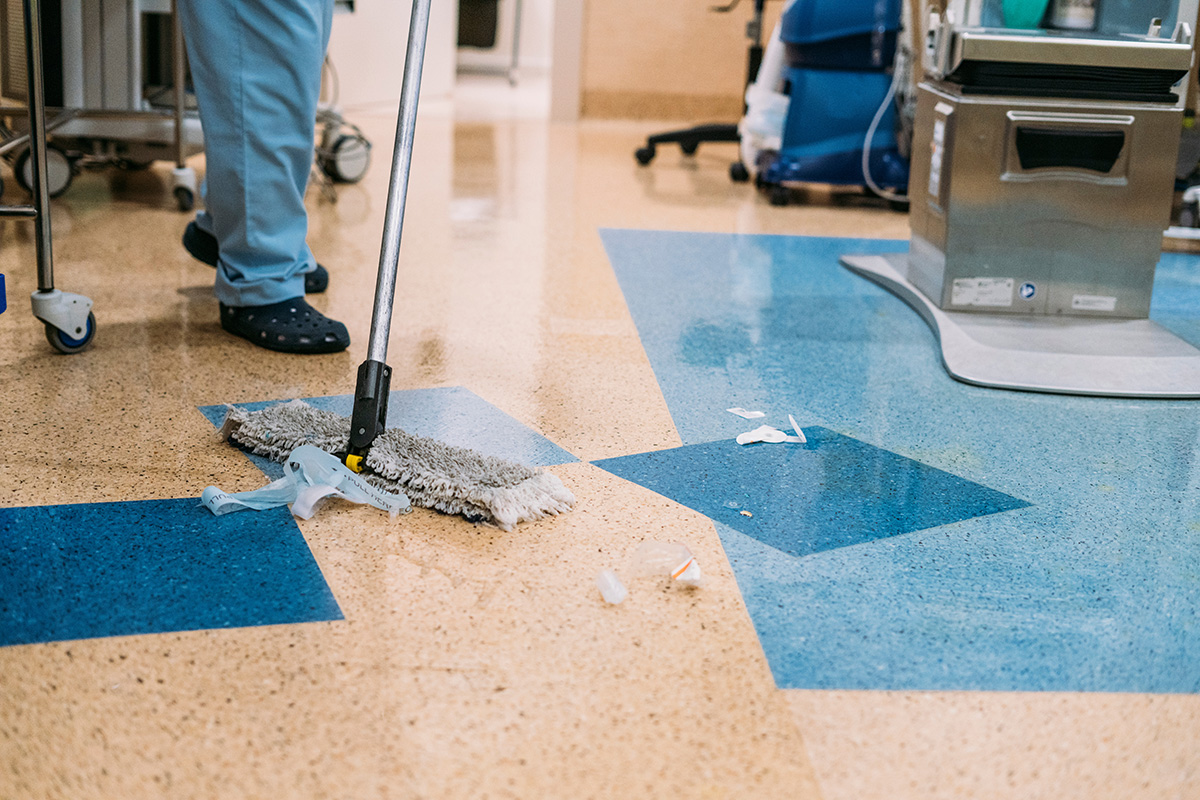Evaluation of Cleaning and Disinfection Must Be at the Top of the List When Selecting Surface Materials and Products

I have had the pleasure this year of developing and presenting an educational webinar titled Surface Selection: Strategic Support for Infection Prevention, Funded by Meganite. In this webinar, I present strategic uses of surface materials that support infection prevention and why surfaces are a foundational issue in the ongoing battle to mitigate the spread of HAIs.
The audience for this webinar has been primarily architects and designers for healthcare facilities. My experience interacting with this audience has revealed MAJOR gaps in how the built environment is designed and what’s needed for infection prevention.
Major Gap #1: Evaluation of Cleaning and Disinfection Requirements
The presentation begins with me asking: “How many of you read the Care and Maintenance and Instructions for Use BEFORE specifying a material or product?” I have given this presentation over 25 times, and initially, I was shocked to see that about 95% of the audience never reviews or evaluates the cleaning and maintenance requirements provided by the manufacturer.
Moreover, this audience is also unaware that infection prevention guidelines within a facility are often entirely different from the manufacturer’s care and maintenance recommendations.
This is a serious issue and a gap in understanding what is required for cleaning and disinfection. It also explains why most surfaces and products are difficult, if not impossible, to effectively clean and disinfect per infection prevention guidelines without causing damage. This damage, initially unseen, supports microbial attachment, biofilm formation, and colonization. This is where a foundational issue begins!
Major Gap #2: Inappropriate Use of Surface Materials
I frequently have conversations with infection preventionists who report surfaces that are inappropriate for the areas they are specified in. An example of this happened again recently. A new ambulatory care center was under construction, and the material selected for the reprocessing area was a porous laminate with a melamine substrate. Unknowingly, the facility has been set up for failure – they have specified material that will be quickly damaged by disinfectants and ultimately begin to support a world of microbes that can’t be seen or reached using the biocides used to kill them.
Part of the problem is that architects and designers specifying products don’t necessarily understand the reprocessing process the area will be used for, nor the facility’s recommended cleaning and disinfection guidelines as stated in infection prevention guidelines.
Major Gap #3: Disregarding Areas as Unimportant to Infection Prevention
One more concern was brought to light in the same meeting regarding the material selection for the ambulatory care center. The manufacturer’s cleaning and disinfection guidelines were to use ONLY soap and water. I am frequently reminded that patients don’t come in contact with the floor. Well, we certainly hope not! However, let’s consider some of the ways contaminated floors support microbial transmission:
- The nurse call button hits the floor and is immediately picked up and handed to the patient.
- The slippers patients wear to walk the halls that remain on the patient’s feet when they crawl back to bed.
- Wheels of the gurney, beds, medical devices, wheelchairs, and food service carts spread contamination to all areas of the hospital.
The above supports why it is critical to clean and disinfect floors with more than soap and water. Disinfectants are required in a healthcare setting.
Please understand I am not pointing fingers at any group of professionals or any one person. My goal is to continue to spread the message that surface selection significantly impacts our ability to mitigate the spread of infections effectively. These are gaps we can address! We need to collaborate and gain insight and understanding from the diverse areas of expertise, all trying to find sustainable solutions.
Surfaces Matter™
Surfaces Matter: A New Approach to Patient Safety
Clean and disinfected surfaces are necessary in the healthcare setting to prevent HAIs, yet this basic requirement is a challenge. HSI is the only organization focused on the role surfaces play in this healthcare crisis. The Institute is actively developing minimum standard test methods and criteria for surface materials and patient care products to validate if they can be quickly and safely disinfected.
We need your help to continue this critical, life-saving work. Please contribute to our organization today.
Donate Now
As a 501(c)(3) non-profit organization, we rely on donations to save lives. We need your help.
Please consider donating, becoming a member, or exploring corporate sponsorship through your workplace today.

